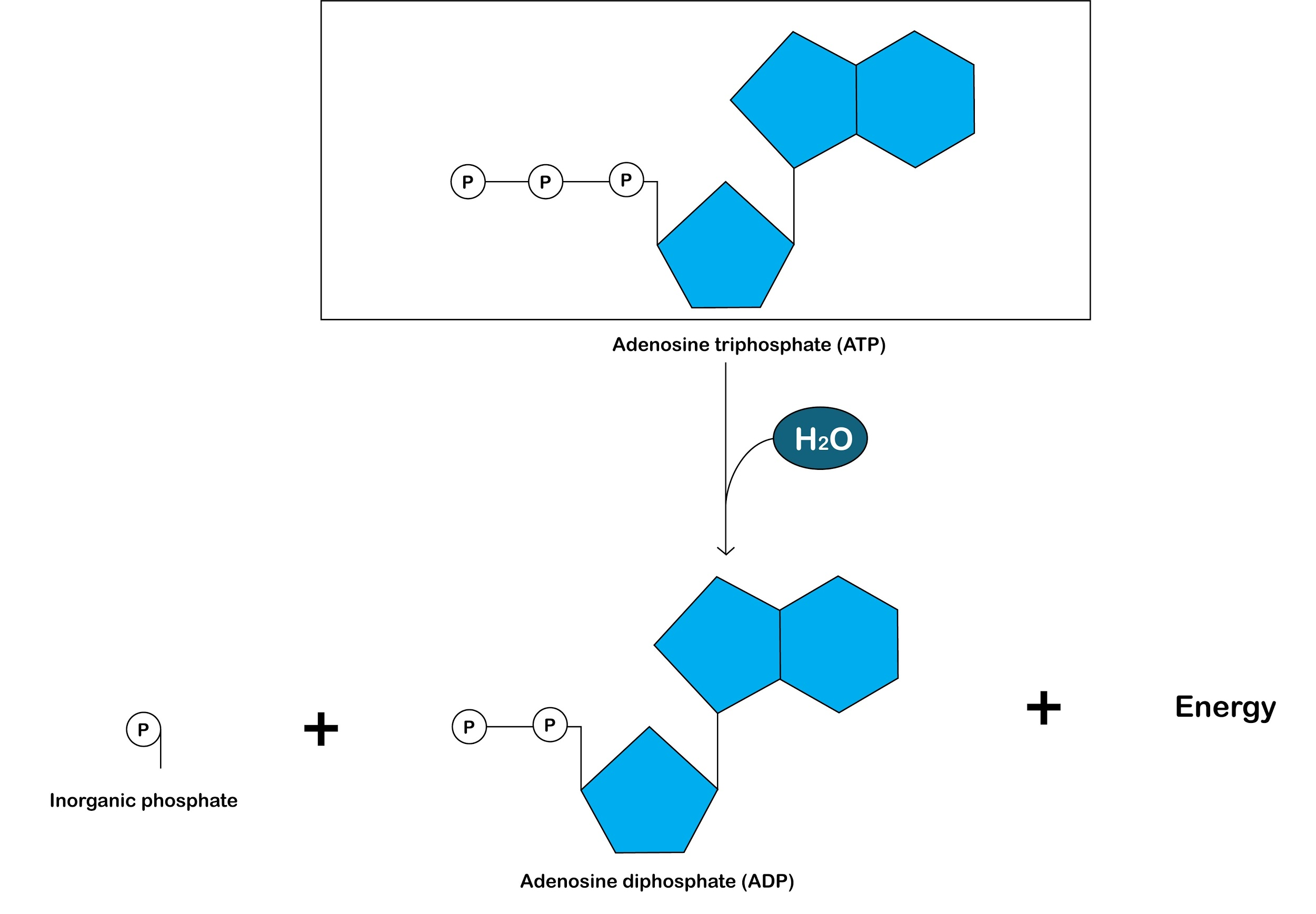
The energy-releasing process in living organisms is
(a) Reflex action
(b) Respiration
(c) Blood circulation
(d) Reproduction
Answer
506.4k+ views
Hint: The process works by moving electrons from a high energy state to a low energy state. In this process, the end product is ATP which is used for regular metabolic activities.
Complete answer:
Respiration is a process where chemical energy in the form of carbohydrates, lipids, or protein is used to produce ATP. There are two kinds of cellular respiration: aerobic in which glycolysis, Krebs cycle, and oxidative phosphorylation where there is a need for oxygen to produce energy, and others are anaerobic in which glycolysis, fermentation occurs without the need of oxygen. The first two stages of cellular respiration produce ATP and their main purpose to provide the electron to the electron transport chain.

So, the correct answer is, ‘respiration.’
Additional Information:
- Respiration supplies energy for chemical changes in the cell, cell division, germination, muscle contraction, etc.
- During anaerobic respiration, energy is released from glucose without the presence of oxygen known as fermentation. There are two types of fermentation processes: alcoholic and lactic acid.
- Oxidative phosphorylation occurs in the mitochondrial cristae and produces about 32 molecules of ATP.
Note:
- ATP or adenosine triphosphate is the short term energy currency store produced by mitochondria during ETC and used by cells to perform daily tasks.
- The cell gets energy by breaking down the high energy bonds between the last two phosphates in ATP.
- ADP can be reproduced into ATP later when the cell has food that can be broken down.
Complete answer:
Respiration is a process where chemical energy in the form of carbohydrates, lipids, or protein is used to produce ATP. There are two kinds of cellular respiration: aerobic in which glycolysis, Krebs cycle, and oxidative phosphorylation where there is a need for oxygen to produce energy, and others are anaerobic in which glycolysis, fermentation occurs without the need of oxygen. The first two stages of cellular respiration produce ATP and their main purpose to provide the electron to the electron transport chain.

So, the correct answer is, ‘respiration.’
Additional Information:
- Respiration supplies energy for chemical changes in the cell, cell division, germination, muscle contraction, etc.
- During anaerobic respiration, energy is released from glucose without the presence of oxygen known as fermentation. There are two types of fermentation processes: alcoholic and lactic acid.
- Oxidative phosphorylation occurs in the mitochondrial cristae and produces about 32 molecules of ATP.
Note:
- ATP or adenosine triphosphate is the short term energy currency store produced by mitochondria during ETC and used by cells to perform daily tasks.
- The cell gets energy by breaking down the high energy bonds between the last two phosphates in ATP.
- ADP can be reproduced into ATP later when the cell has food that can be broken down.
Recently Updated Pages
Master Class 11 Economics: Engaging Questions & Answers for Success

Master Class 11 Business Studies: Engaging Questions & Answers for Success

Master Class 11 Accountancy: Engaging Questions & Answers for Success

Master Class 11 English: Engaging Questions & Answers for Success

Master Class 11 Computer Science: Engaging Questions & Answers for Success

Master Class 11 Maths: Engaging Questions & Answers for Success

Trending doubts
Which one is a true fish A Jellyfish B Starfish C Dogfish class 11 biology CBSE

State and prove Bernoullis theorem class 11 physics CBSE

1 ton equals to A 100 kg B 1000 kg C 10 kg D 10000 class 11 physics CBSE

In which part of the body the blood is purified oxygenation class 11 biology CBSE

One Metric ton is equal to kg A 10000 B 1000 C 100 class 11 physics CBSE

Difference Between Prokaryotic Cells and Eukaryotic Cells




